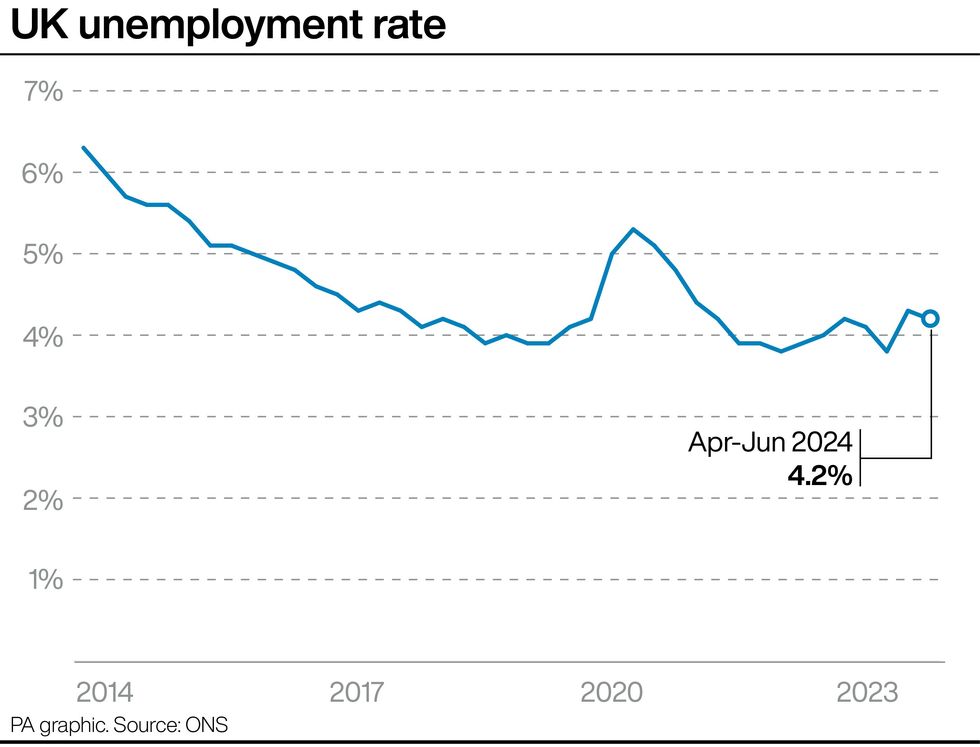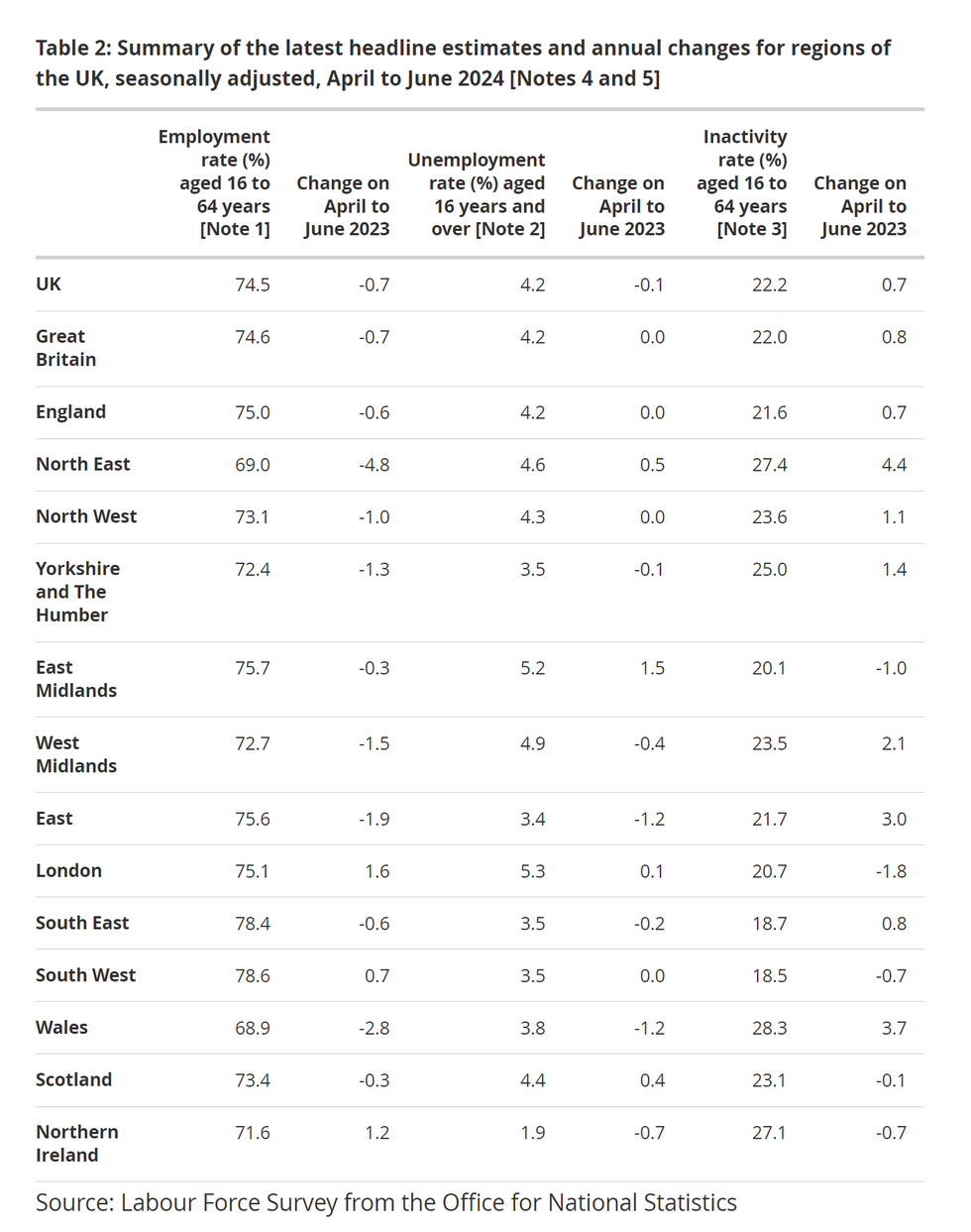Several areas across the UK are seeing unemployment rates soar despite official figures showing the national average falling.
The rate of unemployment fell to 4.2 per cent in the three months to June, from 4.4 per cent in the previous three months according to the Office for National Statistics.
But across the UK, six areas displayed higher-than-average unemployment rates as workers struggle to find work.
Unemployment refers to people without a job who are actively seeking work but does not reflect the proportion of the total population who are unemployed.

This graph shows the UK unemployment rate is at 4.2 per cent
PA
It is the proportion of the economically active population (those in work and those seeking and available to work) who are unemployed.
From April to June 2024, the highest unemployment rate was in London (5.3%) closely followed by the East Midlands at 5.2 per cent.
Nevertheless, the employment rate in London (75.1%) is above the national UK average of 74.5 per cent.
The inactivity rate (people in the labour force who are not actively seeking work) is also low in London at 20.7 per cent compared to the national average of 22.2 per cent.
The other four areas in the UK that displayed higher than average rates of unemployment included the North East (4.6%), the North West (4.3%), West Midlands (4.9%) and Scotland (4.4%).
Areas can experience higher rates of unemployment for many reasons including people suffering from illness, taking early retirement, caring for family or studying.
Historically, London’s unemployment rate is higher than other UK regions and Covid-19 impacted unemployment rates in London greater than in other parts of the UK, according to Trust for London.
Meanwhile, Northern Ireland displayed the lowest rates of unemployment at 1.9 per cent.
However, while the country has low unemployment rates it has a higher-than-average inactivity rate (27.1%) and a lower-than-average employment rate (71.6%).

This chart shows breakdowns of changes in UK employment, unemployment, and economic inactivity
Labour Force Survey from the Office for National Statistics
LATEST FROM MEMBERSHIP:
- GBN Health Check: Important advice for taking prescription medications abroad after police crackdown
- Hundreds of physical and verbal attacks on driving test examiners, DVSA stats show
- Thatcher took hard line against riots but she tackled core issues that sparked them – Starmer should do the same – Kevin Foster
Chancellor Rachel Reeves has said these numbers show there is “more to do in supporting people into employment.”
She said: “This will be part of my Budget later in the year where I will be making difficult decisions on spending, welfare and tax to fix the foundations of our economy so we can rebuild Britain and make every part of our country better off.”
ING’s James Smith said: “Officials are likely to disregard the latest fall in the unemployment rate owing to data concerns, but sticky wage growth suggests the Bank will keep rates on hold in September before resuming rate cuts at November’s meeting.”